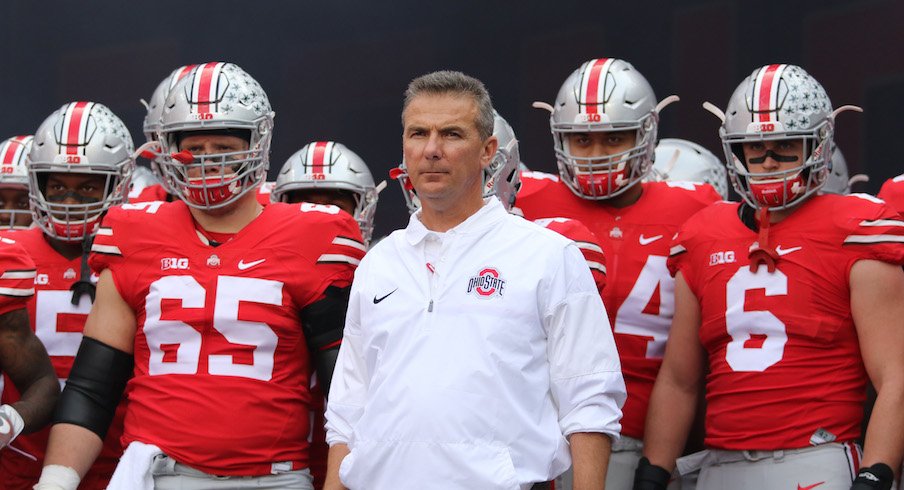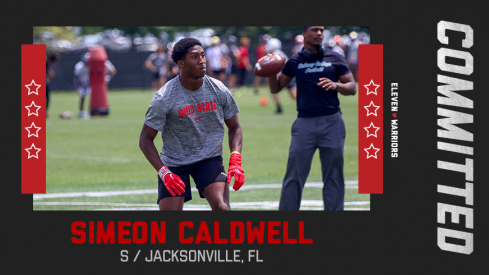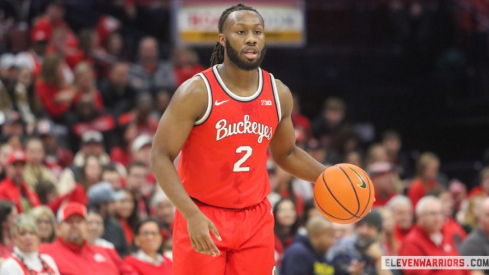Ohio State adds another top-100 safety as Simeon Caldwell commits to the Buckeyes.
Last week, the NCAA passed a rule change which drastically alters the way redshirt seasons have been handled in the past.
Under the old rules, if a player played even one single snap in one single game, it would cost him an entire season of eligibility. Now, that is no longer the case as the rule allows for a player to see action in up to four games and still take a redshirt.
The new rule completely changes roster management, adding a ton of flexibility for coaches trying to evaluate younger players, get them valuable in-game experience or have them help their team. They won't have to be reluctant to play younger players, because they're no longer wasting an entire season of eligibility with one snap.
Coaches could utilize the rule change in a number of different ways. The most obvious is that the first four games – which traditionally feature quite a few lesser opponents – could be full of freshman playing in garbage time against inferior opponents.
Another scenario is that it could allow players more time to develop and earn playing time at the end of the season. In the past, it's been rather obvious which players would redshirt by the middle of the season, because coaches wouldn't burn an entire season of eligibility by playing someone at the end of the season. Now, that's possible – a player could develop into a player that could help the team, play the last four games of the season and still take a redshirt.
In any case, the implications of this change are huge. Truthfully, we don't know exactly how Urban Meyer and might handle take advantage of the new rules, but what we can do is look back at how the the current rules might have helped the team in the past.
Offensive Line
There are really too many offensive linemen to list who've burned an entire season of eligibility playing garbage time minutes with the second team in an effort to get them live game reps.
On the current roster alone, Isaiah Prince and Thayer Munford have one less season of eligibility remaining for that very reason.
Under the new rules, those players would still be able to play at the end of four blowout games and still get the same valuable in-game experience, but preserve an entire year of eligibility at the same time.
This rule change might impact offensive linemen more than any other position group because linemen are probably the most likely to exhaust all of their eligibility before moving on to the next level – at least at Ohio State.
Other players at other positions may not even use the extra year of eligibility even if they had it, but there's a good chance the linemen will.
Binjimen Victor
Binjimen Victor is a player Urban Meyer seemed to go back and forth on whether or not he would play as a true freshman.
On one hand, Meyer saw enormous potential in Victor and couldn't imagine he would be around for five years even if he did redshirt him. But on the other hand, Victor wasn't quite ready to play, especially mentally – by his own admission.
Meyer opted to play Victor, but the receiver played only a few games in 2016, catching just four passes in three games. Under the current rules, Victor likely would have gotten the best of both worlds – playing early, but eventually redshirting.
This is actually the story for quite a few young receivers – Jaylen Harris and Austin Mack could also fall into this category. That's why the rule could be beneficial for incoming freshmen Kamryn Babb, Chris Olave and Blue Smith.
Tate Martell
There was no need for Tate Martell to play last year and lose an entire season of eligibility. The Buckeyes had a four-year starter returning and two capable backups behind him.
However, if Martell could have played some live snaps last season without compromising eligibility, it certainly would have helped the Buckeyes this season, as Ohio State has only one quarterback on the roster who's ever taken a live snap.
At a position like quarterback, live reps are golden, and if Martell would have been able to get some as a true freshman, it would have certainly helped him in the long run.
Sam Hubbard and K.J. Hill
These are the two famous examples of Urban Meyer deciding to redshirt a player, then openly regretting that decision throughout the season, knowing that changing his mind in the middle of the season would cost the player a few games in their already short college careers.
For that very reason, neither ever saw the field as true freshman, and both took redshirts, despite Meyer's regret. Under the current rules, however, Meyer would have been able to play them in four games that season without compromising an entire year of eligibility.
These are prime examples of players who weren't quite ready to play to start the season, but could have bolstered the roster by the end of it.
Stephen Collier
This one was never actually a problem, but it very well could have been.
Ohio State famously lost two starting quarterbacks in one season with Braxton Miller going down before the start of 2014 and his replacement, J.T. Barrett, injuring his ankle in the final regular season game.
If the Buckeyes would have lost one more quarterback to injury in the postseason, things would have definitely gotten interesting because the only other scholarship quarterback on the roster was true freshman Stephen Collier, who was in line for a redshirt.
It's difficult to say whether or not Meyer would have sacrificed an entire season of eligibility for Collier to play a maximum of three games – even though they were the biggest games he's seen yet – but with the new rules, you wouldn't have had to worry about it if Collier hadn't played yet.


